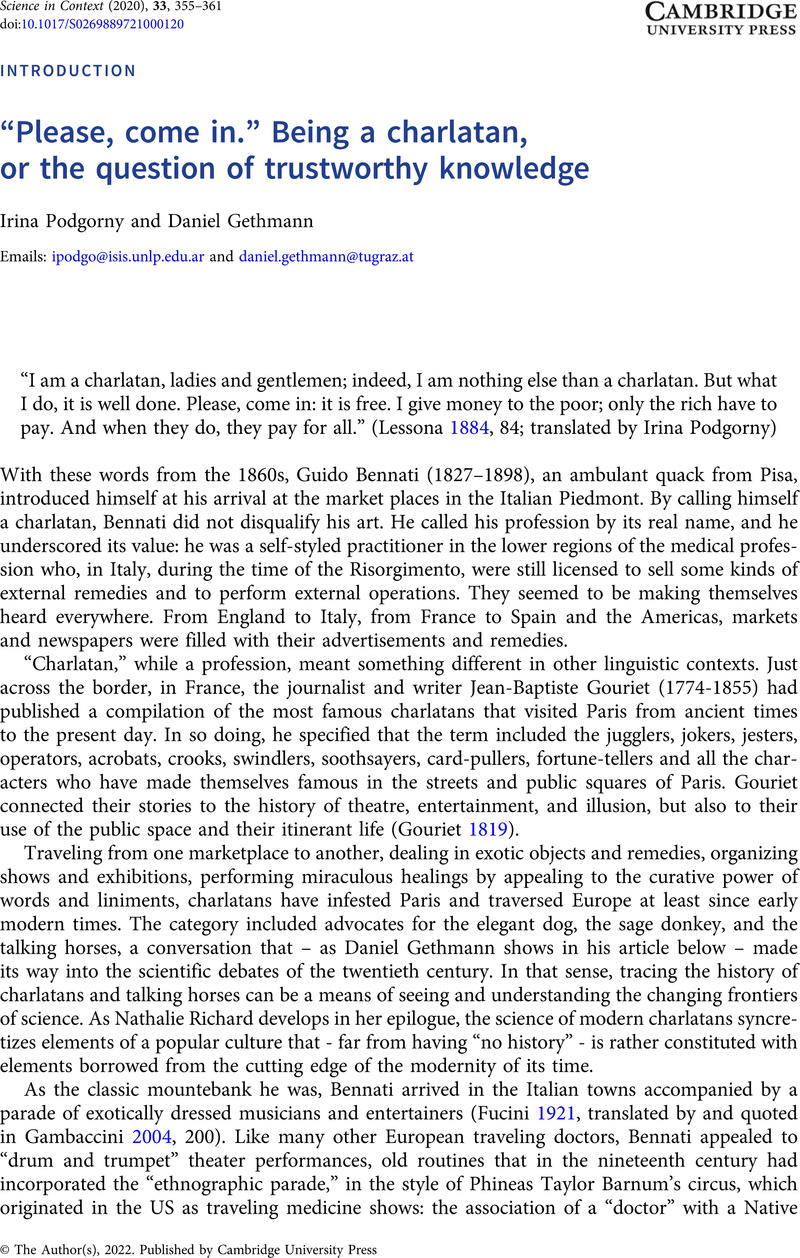Crossref Citations
This article has been cited by the following publications. This list is generated based on data provided by Crossref.
2022.
Isis Current Bibliography of the History of Science and Its Cultural Influences 2022.
Isis,
Vol. 113,
Issue. S1,
p.
1.
Lopes, Maria Margaret
2023.
Objects and Contradictions on the Move: From Private Collections to Provincial Brazilian Museums.
Centaurus,
Vol. 65,
Issue. 3,
p.
603.
Omes, Marco Emanuele
2023.
“In aria sana”: Conceptualising Pathogenic Environments in the Popular Press: Northern Italy, 1820s–1840s.
Centaurus,
Vol. 65,
Issue. 1,
p.
91.
Kneas, David
2024.
Gaming empire: Confidence tricksters and the reinvention of self in the 1930s.
History and Anthropology,
Vol. 35,
Issue. 5,
p.
1244.



